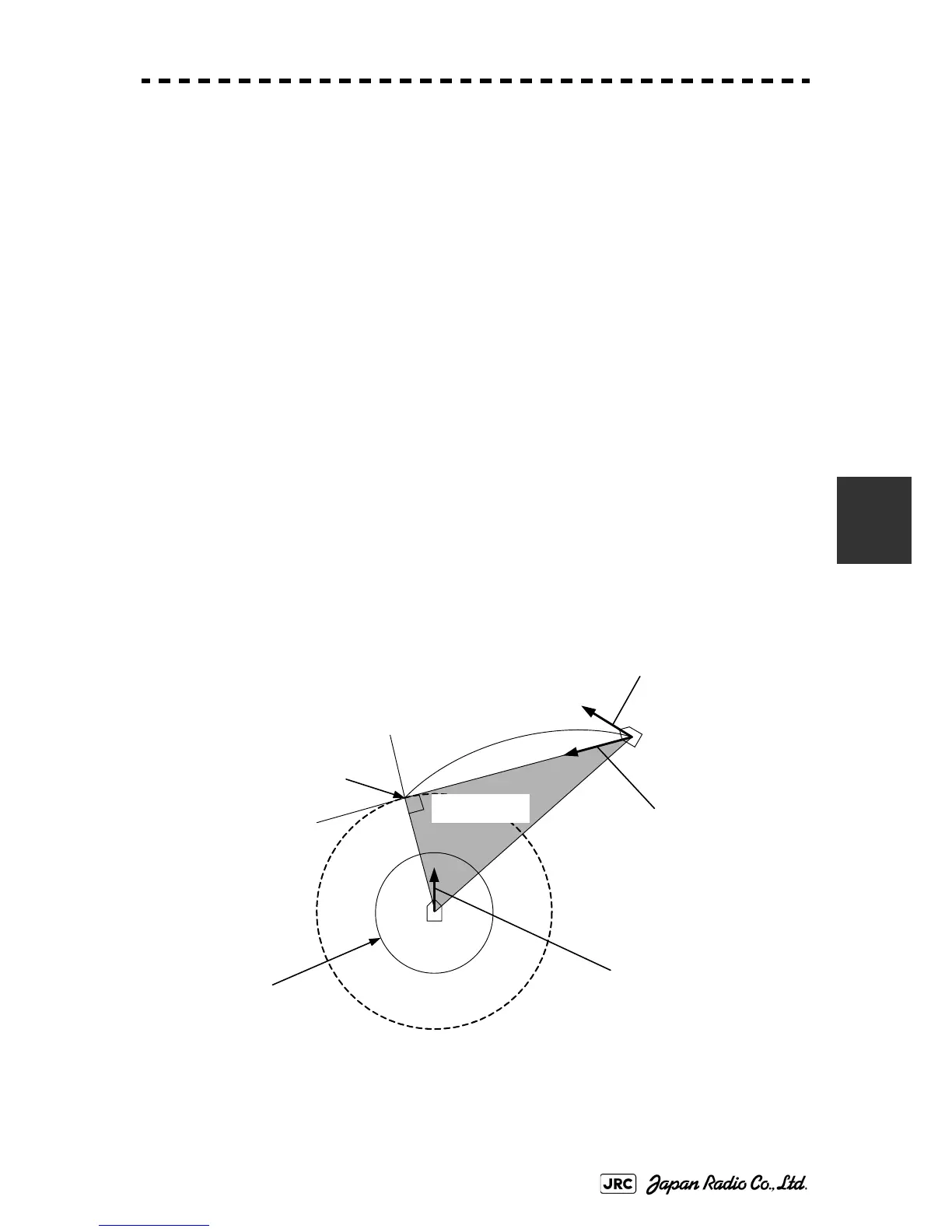JMA-9100 Instruction Manual > 5.OPERATION OF TARGET TRACKING AND AIS > 5.1 PREPARATION
5-3
5
5.1.1.2 Marine Accidents and Collisions
Among marine accidents, collision accidents have been highlighted as the
tonnages and speeds of ships become higher along with the increase in traffic at
sea. If a tanker carrying dangerous articles such as crude oil collides with any
other vessel, then not only the vessels involved with the accident but other vessels
in the vicinity, port facilities, inhabitants in the coastal area as well as marine
resources may also suffer immeasurable damages and troubles. Collision
accidents have a high percentage of the marine accidents that have occurred in
recent years. To cope with these problems, any effective measures are needed and
some equipment to achieve collision avoidance requirements have been developed
at rapid strides.
5.1.1.3 Basic Concept of Collision Avoidance
There are two aspects in collision avoidance: collision prediction and avoidance.
Collision prediction is to predict that two or more vessels will happen to occupy
the same point at the same time, while collision avoidance is to maneuver vessels
not to occupy the same point at the same time.
In practical operation of vessels, a spot of collision has to be deemed to be a single
point but a closed zone. This closed zone is conceptually defined as a CPA
(Closest Point of Approach). In collision prediction, the time to be taken until a
ship reaches the CPA is defined as a TCPA (Time to CPA).
Fig. 5-2 shows a diagram caked "Collision Triangle".
Fig 5-2: Collision Triangle
CPA
Target Vessel True Vector
Own Ship True Vector
Own Ship
TCPA(Time to CPA)
Target vessel
CPA ring
Relative Vector
Collision Triangle

